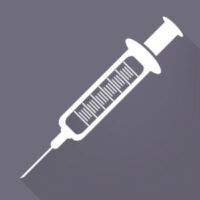Federal Prisons to Begin Needle-Exchange Program
Correctional Services Canada (CSC) announced this week they will be launching a needle-exchange program at two federal penitentiaries this June, with plans for a national roll-out beginning next year. This decision has both critics and proponents. Numerous harm reduction organizations have been calling for clean needles for prisoners for years, while the union representing correctional officers say it condones illicit drug use and endangers officers. Harm Reduction organizations like the Canadian HIV and AIDS Legal Network joined forces to launch a constitutional challenge against the Canadian government in 2012 over this issue. Director of research and advocacy, Sandra Ka Hon Chu, said that CSC is violating prisoners’ Charter Rights by denying them access to sterile injection equipment and allowing the spread of diseases like HIV and Hepatitis C. HIV rates of incarcerated people are 6 times higher than the national average. People who use injection drugs while incarcerated will use regardless if there are clean needles. Therefore, CSC is not encouraging the use of drugs by implementing a needle-exchange program, but making both the users and other prisoners and staff safer by preventing the spread of disease. The president of the Union of Canadian Correctional Officers said he was “baffled” by the announcement which he believes condones drug use within prison walls, and puts weapons in the hands of inmates. However, this needle-exchange program is being modeled after other programs that are already in place and are doing well. Prisoners who have Epipens or who are insulin dependent already use needles onsite and a spokesperson for the CSC said this has also prepared guards for how a safe needle exchange would work. The CSC also looked at research from the United Nations Office on Drug and Crime that showed needle-exchange programs like the one suggested are not associated with increased attacks on staff or prisoners. Next month Canada Drug Rehab will be doing a profile on harm reduction in Canada where you can learn more about this approach to drug policy. References: Federal Prisons to Offer Clean Needles to Injection-Drug Users A Tough-On-Drugs Stance in the Canadian Prison System Harms Prisoners The post Federal Prisons to Begin Needle-Exchange Program appeared first on Canada Drug...
The Evolution of Addiction Models: How Drug Rehab and Alcohol Treatment Program Thinking in Canada has Evolved
Introduction The twentieth century saw serious scientific inquiry into addiction and addictive behaviours. The two main addiction models that sprang forth from the discourse are contradictory, and new theories are bringing us closer to a middle ground. These two models were the moral model and the disease model. In response to the pervading idea of sinful addicts, the ‘disease of addiction’ came about which removed the burden of blame from the substance user. However as the field of addiction increases, more models have sprung forth as well as studies on their effectiveness. Following an overview of historical models, we will discuss the newest evolution of addiction models. Moral Model In the 18th and early 19th centuries addiction was seen as a moral affliction, and that alcohol or drug users had poor character. These people were jailed or sent to mental hospitals with no real care. This moral failing was often strongly tied with sin and they were considered spiritually fallen. Disease Model The 12 step model of treating addiction, as created and dispersed by Alcoholics Anonymous (AA) was founded in 1935 by Bill Wilson and Dr Robert Smith. This was based on the disease model, stating that addicted people have no control over the substance and its addictive powers. A key part of the disease model is that it is irreversible, and because it cannot be cured, lifelong abstinence is necessary. Psycho-Dynamic Model In the early 20th century Sigmund Freud was developing his own theory, one that still informs modern psychology today; the concept that traumas from childhood go on to inform our adult decisions and coping mechanisms. Many clinicians use this theory in counseling to determine if present difficulties are predicated by childhood experiences. Social Learning Model For most of the 20th century, substance use was thought of as strictly a physical dependence and associated physical withdrawals. In the 1970s the narrative shifted to considering that a person’s drug use was informed not just by the drug’s physical effects but also by behavioural and societal factors, as well as the actual “high” of the drug. This model suggests dependence is a learned behaviour, as well as a normal facet of human behaviour which is only problematic when someone experiences negative consequences of their drug use yet continues to use. Socio-Cultural Model A model that has gained traction in the last 20 years, it builds upon the social learning model by viewing society itself as a factor in making certain demographics more at risk for drug abuse. Therefore, the solutions in this model are larger scope and look at ways to alleviate poverty and discrimination. Drug rehabilitation and alcohol treatment in Canada has been heavily influenced by all these various models of addiction through the years. The Modern Take on Addiction Models Today, neuroscientists and psychologists are realising that the brain disease model ignores important factors in addiction. Namely that there is a level of choice involved in taking drugs, that people respond to incentives, and that there are usually underlying social or mental health reasons for beginning drug use. This new outlook combines almost all of the models proposed over the years. Most Canadians know at least one person in their life who used to have problems with drugs or alcohol but chose to change their life. A true disease, like cancer, gives no choice to the person to have the disease or not. “Addiction and the Brain-Disease Fallacy” uses examples of addicts recovering without medicinal help to disprove the disease model. Substance users who respond to incentives like not losing their job/family/home and are able to...
Tobacco Facts: Drug Fact Sheet on Tobacco
Early History Tobacco is a plant native to the Americas, and it is believed to have been first used in society around 1 BC. Indigenous North Americans used tobacco for both religious and medicinal purposes. In the late 15th and early 16th centuries when Europeans went to the Americas, tobacco was used in trade and was taken back to Europe to grow. Tobacco became popular and by the 18th century, companies were being established in America to process tobacco into cigars and snuff. Early 19th century scientists discovered the chemical nicotine and concluded it was indeed dangerous. However, this did not stop the growing popularity of tobacco. During the First World War cigarettes became known as the ‘soldier’s smoke’. Multiple tobacco companies vying for customers began to market specifically men’s cigarettes, and women’s cigarettes, with smoking rates in female teenagers tripling between 1925 and 1935. Health Risks Revealed The pinnacle of the tobacco industry’s power seems to be during the Second World War when cigarettes were included as rations, and after receiving them free in the war, soldiers returning home were hooked. Tobacco’s associated health concerns were finally discovered in the 1950s, and with the 1964 Surgeon General’s “Smoking and Health” report, its time was coming to a close. In the latter half of the 20th century, government regulations on tobacco advertising contributed to the dramatic reduction of smokers in places like the USA, UK, Canada, and Australia. However, it must be noted that just because Westerners have seen a substantial change, does not mean that tobacco companies have faded to the background. These companies have vastly expanded in poorer and less educated areas of the world like parts of Asia and continue to advertise and hook young people for life. It is also in these poorer countries that young child workers can develop ‘green tobacco sickness’ from picking wet tobacco leaves. Current Tobacco Consumption Statistics The World Health Organization (WHO) estimates that tobacco kills more than 7 million people annually worldwide. Almost a million of those deaths are non-smokers who succumb to the effects of second-hand smoke. The National Institute for Health (NIH) in the USA estimates that without the widespread scientific information on how harmful tobacco is, there would be 80 million American smokers instead of 45 million. Cigarette smoking is still the greatest preventable cause of premature death in the USA, accounting for 1 out of every 5 deaths, 87% of lung cancer deaths, and 30% of all cancer deaths. Both WHO and NIH credit bold public health campaigns for the dramatic reduction in new smokers, and the rise of current smokers quitting. Modern Treatment There are many approaches to recovery from nicotine addiction. Behavioural changes in combination with medication therapies can help smokers develop alternate strategies to manage stress and cravings. Nicotine is powerfully addictive however, and so up to 80% of smokers who try to quit will relapse within 6 months. This is especially true of people with mental illness or other addictions. These people purchase almost half of all cigarettes in the USA. 80% of people with alcohol issues, and 90% of people with schizophrenia smoke. There are many over the counter medications that help with nicotine cravings, as well support groups, and even apps for your phone. Later this month to celebrate World No Tobacco Day there will be a blog post about the best apps to help kick the sticks. If you or someone you know smokes and has another substance use issue, please contact our specialist who can help find a dual treatment option. References: WHO: Tobacco...
Health Canada Announces Warning Labels for Opioid Prescriptions
Health Canada announced plans last week to have all opioid prescriptions be accompanied by awareness stickers and leaflets to inform Canadians of the risks associated with opioids. Opioids are pain relievers that include oxycodone, morphine, fentanyl, and codeine among others. Many Canadians will be prescribed an opioid pain reliever for things like broken bones and surgeries. However, many will also be prescribed these drugs for ongoing chronic pain conditions, which is one of the ways people can develop a dependence without realizing. This October is the expected roll out date for Health Canada’s new regulations. The new changes are: Opioid prescriptions will come with a yellow, rectangular warning label that says “Opioids can cause DEPENDENCE, ADDICTION and OVERDOSE”. A one-page handout with concise and consistent information on the risks of overdoses will be given to the patient every time they refill their prescription. Pharmaceutical companies will be responsible for creating risk-management plans Sample sticker from Health Canada These changes are being hailed by doctors across the country as beneficial in promoting dialogue between healthcare professionals and their patients. However, some doctors are hoping that provincial or federal regulating bodies will create their own risk-management plans. Dr Abhimanyu Sud, director of the Safer Opioid Prescribing Program in Toronto, believes the development and delivery of these risk-management plans should be done by the government to avoid the vested interests of drug companies who are primarily concerned with profits. Alberta’s College of Pharmacists is already developing their own opioid information pamphlet that will be distributed across the province’s pharmacies. However, the hope is that these conversations will start in the doctor’s office when initially prescribing, rather than waiting until the patient is already on the opioid medication. If you are on a opioid prescriptions and are wanting to come off, call our specialist to see what drug rehabs accept opioid-dependent clients. References: Health Canada’s Prescription Opioid Stickers and Leaflets get a Qualified Welcome The post Health Canada Announces Warning Labels for Opioid Prescriptions appeared first on Canada Drug...
Mental Health Week: Mental Illness Treatment Programs in Canada and Community Gardens
Community Garden Programs Help Those with Mental Illness Thrive Did you know there is a branch of therapy called ecotherapy? Ecotherapy is any kind of therapy that integrates activity in nature. Horticulture therapy is a growing part of ecotherapy as “the essential components of a community garden program (growing plants, spending time with others in a safe and supportive environment, being active outdoors and bringing home healthy produce harvested from the garden) can contribute to positive mental health outcomes”. Ecotherapy is a technique used in combination with other therapies to help people with disorders like PTSD and anxiety. Mental Health Benefits of Dirt Mycobacterium vaccae is a naturally occurring bacteria in soil that has similar properties to antidepressants. It has been found to boost the production of serotonin, one of the chemicals in the brain that makes us happy. Gardeners inhale this bacteria or have topical contact and the positive effects can be felt for up to 3 weeks. In one study, lung cancer patients were injected with this bacteria and they reported less nausea and pain, and overall increased wellbeing. In a follow up study, scientists injected the same bacteria into mice and saw that it stimulated the same nerves that activate serotonin production as Prozac. Social Connections The mental health benefits abound from partaking in community gardening. We’re fortunate in Canada in that even the most urban of locations, think Toronto or Vancouver, often have community garden program. The community and garden components each bring different benefits that work amazingly well together. The community aspect means participants are working with other people and building social networks, while the gardening itself helps with reducing stress, increased self-worth, as well as improvements in physical health. The Stop is a community food centre in Toronto that runs community garden programs for local residents. These programs are often targeted at newcomers to the area and seniors, as these are two demographics that are susceptible to social isolation. In a 2012 survey of participants 80% said they made a new friend in the program and 90% felt they belonged to a community at The Stop. Community gardens are springing up all over Canada, from Sackville, New Brunswick to Lutselk’e, NWT. Now is the time to do a Google search and find out if there is one in your city, you might be surprised! References: Mental Health Benefits of Community Gardening Antidepressant Microbes in Soil: How Dirt Makes You Happy Is Dirt the New Prozac? The Stop: Community Food Centre Canada’s Community Gardens JMC: 2018.04.26 The post Mental Health Week: Mental Illness Treatment Programs in Canada and Community Gardens appeared first on Canada Drug...
Five Questions to Ask Private Drug Rehab and Alcohol Treatment Programs
There are many questions to think about as you decide between private treatment programs for drug rehab, alcohol treatment, or other addictions. Price is important of course, but what you get for your money is the key. What kind of staff are on site, and what are their qualifications? Is there a refund policy? Remember to also ask about extra-curriculars, including family programs and aftercare. Let’s go over five questions to ask before deciding which treatment program is right for you. Price What is the cost? Asking right away will allow you to gauge whether you can afford the program. Remember, there will often be additional costs like transportation to and from the facility if you live far away. What do you get for this price? Private drug, alcohol, and/or addiction treatment programs in Canada range from the thousands to tens of thousands for programs that can be a few weeks long to a few months. Ask the following questions to ensure you are going to get value for your money. Staff What is the staff to client ratio? Do you think it will be sufficient or not quite what you were anticipating? What are the credentials of the staff providing therapy? Some expensive private treatment programs only offer you low-level counseling certificate counselors, while others offer Masters or PhD level counselors. A Masters level or above counselor will be able to offer a variety of counseling techniques that a lesser trained counselor will not. An assumption many people have is that they will be having frequent counseling sessions. In fact, some private programs offer no one-on-one sessions unless specifically asked for and rely heavily on group work instead. Ask how many individual counseling sessions you are guaranteed. Refund Policy People get refunds all the time at stores so it is almost assumed that a private treatment program would be the same. In fact, it can be hard to find out a treatment program’s refund policy. Some vary on whether the client was discharged by the program or discharged themselves. Others may offer a partial refund by charging a per day rate for how many days the client was there, plus an admin fee. Do not go to a facility that has a zero refund policy or does not want to discuss it, red flag! Extra-Curriculars There are some great high-end private treatment programs that, along with medical and emotional support, offer extra-curriculars. These can include massage therapy, pool time, indoor and outdoor recreational activities, and sports. While not specifically part of treatment, many clients find these activities fun and a respite from the intensive therapies. It’s worth asking about additional program features like a family program or aftercare. Loved ones of the client are often hugely impacted by the client’s substance use. A family program can help heal old wounds, as well as prevent relapse by ensuring the support team is on board. Making sure family members are accommodating of the client’s new needs and new life when they return home from treatment is critical for sustained change. Additionally, some private treatment programs offer aftercare in the form of alumni networks and/or online support. There should be a discharge plan where the client is given a list of local meetings and support for when they return home. Of course, remember to ask if these family programs and aftercare programs are included or an additional cost. Medication Those who have prescriptions need to ask if their medication is allowed on site. Most facilities are abstinence-based and many do not allow any kind of medication into the facility. If you...








